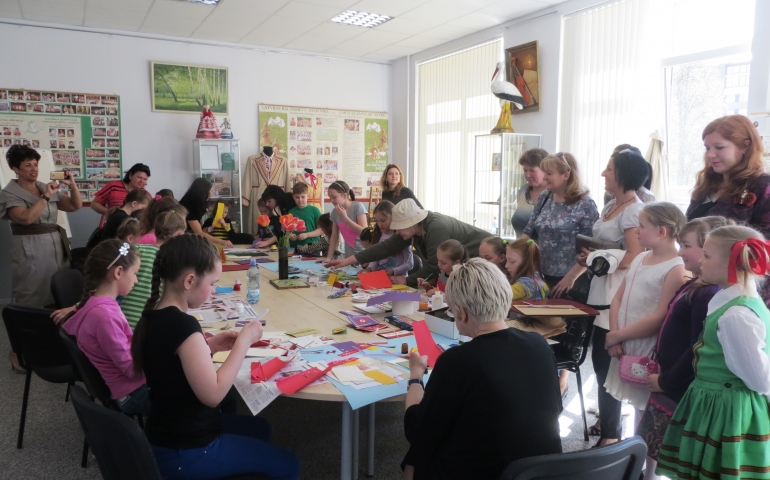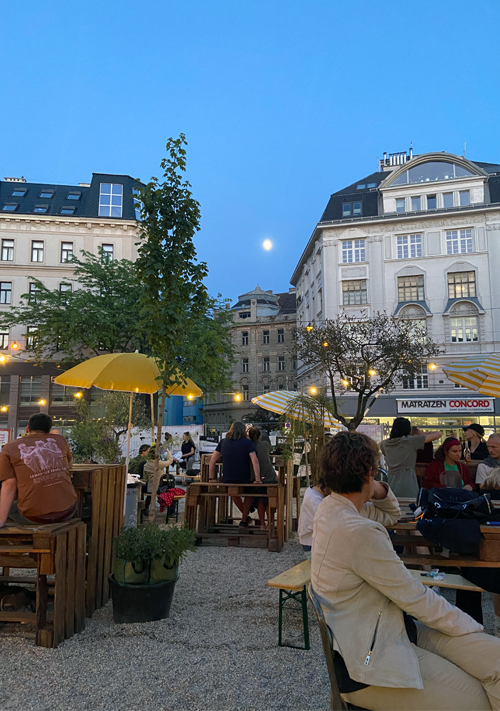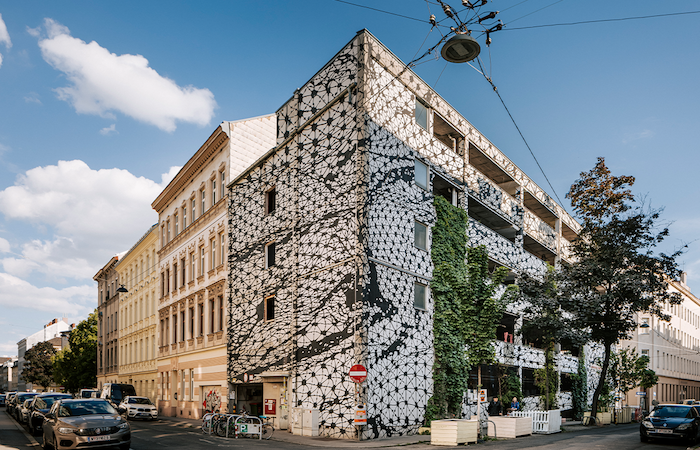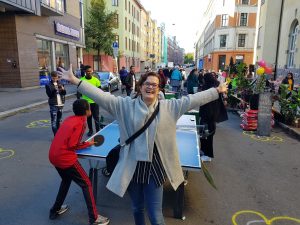In the last decade, cities across Europe have seen an increasing number of innovative actions taking place on different scales: from the district, to the municipal level and from here to regional and national one. However, in most of the cases, experimentation and innovations run the risk of being limited to local impact. How to multiply and scale out the positive impact? What can we learn from innovation taking place in different places, and how could innovative practices be adapted and implemented elsewhere? In this article, we will discuss the potentials and the limits of transferability, what it means, and what are its possibilities in enhancing the role that people have in participating in the shaping of their communities.
In this article, through a set of case studies, we exemplify how practices of innovation could be transferred beyond their birthplace, and what obstacles they may face in the process of replication. The case studies presented in this article come from a study on capitalisation and transferability done by the Metropolitan Research Institute (MRI) for InterregAGORA (AGORA), and other projects that Eutropian joined across Europe. AGORA aims to empower ten different local authorities in the Danube Region with solutions and the experience to activate local space potential in vacant or underused areas through peer-to-peer learning and knowledge exchange. Comparing different types of cases will exemplify how different types of activities and policies can be implemented elsewhere.
Why transferability?
First of all, we must address exactly what we mean by transferability. This term refers to how a policy or action could be replicated elsewhere. In this regard, the overall constellation of the example plays a crucial role. The simpler the constellation is, the easier it is to mimic an action in another place, and therefore the higher is the possibility of a successful transfer. The benefits are clear, we do not invent a new wheel when we learn from examples. We try to bypass slow and time-consuming development elements by looking at the transferable example and have a concept which just needs adaptation to our new local situation. We aim to reach transformation at a greater speed, with better impact and we aim for much more financial efficiency.
First of all, when something is implemented in one place, it is a source of inspiration, showing others who may be interested that such a solution is feasible. Having actual and living examples to learn from, to visit, to see the impact and to compare with is an important part of direct learning. Such learning can be broken in transferable measures and steps that support the implementation process, and that decreases the level of uncertainty and complexity. Having existing and working structures further help to upkeep motivation in the implementation. Not only is it easier to get started when there is someone to look up to, but it is further easier to find project partners, when examples can be given of already successful implementations.
The viability “feeling” of the city and its reactivation
When moving around in the urban space, people usually experience the urban space with its boutiques, galleries, shops, workshops and other activities situated in buildings. People in the public space, exchanging, meeting, gathering and being active with daily life all contribute to a lively neighbourhood. On the other hand, other spaces are left vacant due to lack of care and become the target of vandalism. Either as a cause or an effect of this condition, these spaces are talked about in a stigmatised manner. Vacant spaces are no stranger to the urban fabric: properties become vacant when businesses move elsewhere, or because of other financial, political, or social reasons. Other spaces are vacant from the very beginning, when planners did not consider appropriate usages for different spaces in buildings. No matter where the origin of the vacancy lies, they deduct from the viable city experience we wish for our neighbourhoods. While vacant spaces exist everywhere, so do also solutions of revitalization.

Activating vacant buildings can have many benefits for a variety of parties: owners of buildings benefit from reduced repair costs due to space maintenance while the organisations and individuals using the space temporarily will have the opportunity to do their work or develop their activities in a space that is inaccessible otherwise. As these spaces are under particular conditions, there are often opportunities for special agreements to meet both parties’ needs. This can enable the temporary users to experiment and innovate with very limited risks, as often these spaces are much more affordable than regular properties on the market prices for spaces. When social activities in these communal and open spaces take place, they contribute to creating a sense of identity and the place gains importance in the neighbourhood. When local people who already live and work in the neighbourhood start to use these spaces, it leads to activation of the local community. Thus, the activation will contribute to social sustainability through preservation of local habits and culture that manifest in the activated spaces.
Creating capacities to support the reactivation
In some cases the reactivation and reuse of spaces either need special knowledge and experience, or in some cases there are not enough resources to lead such transformations. In different European cities, organisations take over the role of supporting the municipalities to handle their vacancies. Such organisations can cater their services towards the needs of property owners of places and also towards the temporary users, counsel them, mediate and support them in implementation. In turn, this allows the city to employ activation strategies throughout the city with specialised organisations, which reduces their risk and management efforts at the same time. Such an example of a service is Kreative Räume Wien, which we will now look at in closer detail.
Kreative Räume Wien
Established in 2016, Kreative Räume Wien (KRW) is a service agency based in Vienna, Austria, focusing on issues of vacancy and its re-activation. KRW was established due to a public call from the city to set up a consortium of professionals with architectural, legal, and cultural expertise who understand the dynamics of reactivating spaces. Acting as a connector between different stakeholders, KRW mediates between those who own spaces, and those who need spaces. For different kinds of cultural and social projects, KRW facilitates access to spaces, offers counselling, and enables networking opportunities. Some examples of reused space include an empty lot turned into a bar and market square, and a former parking lot turned into a communal space, with activities such as yoga and a bike repair shop.

The KRW example shows the importance in municipal and private actors communicating with each other when establishing such offices as Kreative Räume Wien. By incorporating professionals from creative economies and space activation processes, what is established caters to what is needed. In facilitating such networking between different societal actors, suitable platforms and events are crucial for enhancing communication and cooperation. When transferring a similar initiative, the collaboration of the municipality with a bridging party like the vacancy agency is crucial. The agency has the possibility to advocate for small actors and ease the process for them. What would a KRW transfer look like? wonderland, in the neighbourhood transition for Lezha project, designed a roadmap for replication together with Austrian and Albanian partners.
Reactivation of public space
Not only buildings get our attention when in the urban space, but movability, comfort, and safety also play a role in our experience of public space. Is the space comfortable for a pedestrian? Is the noise level high due to traffic? How freely can children run? These are just a few qualities that affect the experience of moving around in an urban setting. With the aim of enhancing public spaces to better fit the needs of locals, we come to the second example.
Vinohradská třída in Prague
Vinohradská třída is a street stretching over four kilometres in the centre of Prague, the Czech Republic. The street has been going through a process of revitalization since 2017 and is expected to be finished by 2025. Initiated by the Prague Institute of Planning and Development, the plan is to make the street safer and more comfortable to cyclists and pedestrians, while increasing accessibility to public transport stops. The local community is involved through surveys of current satisfaction with the street, and by providing an opportunity to give feedback on the plans., so the emphasis on public participation is considerable.
When looking the example of the Vinohradská třída project are, it is apparent that the actors related to the project are municipal actors from various planning and transport sectors. In this project they work towards the improvement of the public space for a group of diverse people in a participative manner. True participation leaves the outcomes of the process a bit open. That means, a place which was supposed to be catering for sitting, can end up being a place of play and vice versa, depending on the needs of the involved people. Further, as the revitalization process is considerably large and touches upon many services as a central point in the city, the conceptual plan created could be utilised in other cities at least as a source for inspiration, if not in a concrete manner. The different methods of including local inhabitants could be further utilised in other space revitalization processes. If participation is applied with particular groups such as students like in Oslo, the outcomes and the sets of activities will vary a lot, even though the process can be very similar and transferable.
Implementing such changes in different cities and countries with the same goal, such as making a street more pedestrian- friendly, offers an interesting insight and comparability. Even though there are many overlapping rules and laws about the public space uses and interventions in Europe, the transfer of practices needs adaptation. When looking at these case studies, there are specific learning points to be identified, but how we interpret and implement these learning points in our regions lead to different outcomes. Thus, transferability is not about implementing a practice that will make all spaces look alike, but more about how we take what we learn from an existing example as an example, and implement it in a way that fits local needs.
Not only learning, but growing into a network
Municipalities are large territories and the utmost goal of the city administration is to have fair and supportive frameworks throughout the districts. Any lighthouse project needs scaling out. This is difficult to do, as the local administrations, departments, citizens and their organisations are very different from each other. Scaling out is one of the most important transferability activities for urban leaders. Below we exemplify the power of networks in enabling the scaling up of different types of projects.
The Riga NGO House and ACTive NGOs
Over the last decades different projects started to focus on the re-use of existing urban structures. These may include underused public space, an urban void, the vacant ground floor or an entire building-complex. In 2013, the Riga NGO House was opened in line with the wishes of residents and civil society actors, to support NGOs and to increase citizen awareness of local affairs and participation in municipality-related activities. The NGO house enables different NGOs to use affordable and low-threshold spaces to continue their activities, while performing knowledge exchange and communication with each other. The transfer of such experiences is crucial for other cities, to strengthen and master the positive social impact in the neighbourhood. In the book “The Power of Civic Ecosystems”, this impact is illustrated in various cities across Europe. As a result of the success of the NGO House, ACTive NGOs, a transfer network that learns from this good practice was created.
Innovato-R Urbact
The case of the Innovato-R Urbact project in Cluj-Napoca, Romania, offers an example of an innovative project that is heavily based on a system of networks. With the wider goal of administrative change in mind, the project focuses on supporting public servants to propose changes in administrative practices through technological approaches. Through supporting innovation in public administration, the project strives to empower those working in administration to use creative thinking to enhance the efficiency of the municipality, when it comes to communication and quality of services. The project was first implemented in Turin, Italy, and then replicated among other European cities. In Cluj-Napoca, there is a strong will to engage in technological experiments regarding governance and municipal actions.

By starting with people, in this case public servants, the project has demonstrated that changes can slowly be made to a region’s administrative systems. Through supporting those that know how the system works, there is a great opportunity to develop better practices for local governance. For transferability measures, there is an emphasis on networking and social factors. Having the support of the team in Turin helped with identifying local needs for developing governance practices. In addition to the external support system, a local URBACT group for co-designing actions was established to commit to developing the project with local needs in mind. For submitting ideas for administrative developments, a jury was implemented to determine the most feasible options among the innovative measures proposed by public servants. Further, the implementation of the project in Cluj Napoca led to the development of a guide book (in Romanian) about the implementation of similar practices in order to develop the efficiency of public administration in other Romanian municipalities, as well as emphasise the role of public administration workers in creating change. This shows how projects implemented in other places can be fitted to local needs, when sufficient social networks are supported.
Inspired transfer of practices lead to diverse outcomes
In some cases the replicated case operates with very different frameworks, field or with very different actors. In these cases it is very difficult to see the connection to the original case, even though the starting point or the milestone for the transfer happened with the original case. Inspiring cases allow us to think out of the box, assess the local situation very well and come up with a very new constellation, which only has loose connections to the original case.
Geothermal energy in Szarvas
Another example of innovative use of space comes from Szarvas, a city of 15.500 people in Hungary. The surrounding region has vast, however under-explored, resources when it comes to geothermal energy. In order to learn how to use these resources, three municipal actors from Szarvas took part in a knowledge exchange training in Iceland. The training was a mix of theory and practice of the use of geothermal energy and related policy frameworks, based on which the municipality of Szarvas implemented a project on green energy development. This project also includes the transformation of the energy supply for the local Market Hall building.
The training that took place in Iceland, with the participation of different Hungarian cities, produced many replicable benefits. The training enabled a large amount of knowledge transfer from those who had experience, with those that wanted to initiate the implementation of similar practices for the first time. Further, the training provided a platform for networking, which is something that could lead to future cooperation. Finally, concrete action plans to be implemented back in Hungary were enacted, which were incremental in establishing geothermal energy production in Szarvas.
This example also further exemplifies the importance of growing networks while establishing activities in different regions. While the groups from different parts of Hungary went to the training in Iceland to gain skills to implement renewable energy systems in their respective municipalities, they also got to know others interested in similar topics. This aspect of networking can lead to new collaborations that would not have been thought of without the training event. Even if the training would not lead to tangible changes in energy systems, the networking opportunities can lead to other developments beyond the energy sector to wider regional development.
Easing and speeding up transferability
When transferring experience is so beneficial, why is it not applied everywhere? The models we aim to transfer are in most cases a result of a chain of actions and reactions. The constellations and the resources have made them possible. As exemplified above, crucial for such an undertaking is a good analysis of the transfer model and the target city. Transferring examples does need guidance and mentoring. It is important to consider the obstacles that complicate sharing practices. For instance: cooperation between private and public actors is fundamental when transferring a public policy. This is difficult when the level of trust between citizens and the local administration is low. In terms of institutional challenges, implementing foreign policies locally is difficult due to different legal frameworks for implementing changes, as well as bureaucratic structures that could in some cases hinder citizen participation. Ethically, top-down policy implementation risks losing touch with citizens, as does one-directional knowledge sharing, when the variety of perspectives are lost.
In spite of these challenges, understanding processes like the examples above and proactively transferring them to other cities provides great opportunities for reactivating spaces and innovating planning processes. Therefore, sharing practices across regions can complement inclusion and combat stigmatisation by learning from each other. Not only does the concept of transferability enable innovation, but it further encourages it.
Written by Ulrika Stevens.


